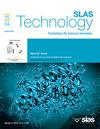2型糖尿病继发下肢血管病变血清标志物Nomogram预测模型的建立
IF 3.7
4区 医学
Q3 BIOCHEMICAL RESEARCH METHODS
引用次数: 0
摘要
目的:筛选2型糖尿病(T2DM)患者继发性下肢血管病变(LEAD)的血清标志物,并建立相应的nomogram预测模型。方法:回顾性收集2022年12月至2024年10月我院收治的200例T2DM患者的临床资料。采用省略法将其按4:1的比例分为建模组(n=160)和内部验证组(n=40)。作为外部验证组,收集同期在其他医院住院的100例T2DM患者的临床资料。结合以往报告收集的与T2DM继发铅相关的血清标志物数据,使用LASSO回归筛选关键血清标志物。此外,多因素分析有助于明确独立的危险因素,并建立了一个nomogram预测模型,并对其准确性进行了检验。结果:该院200例T2DM患者中铅的发生率为21.00%(42/200)。LASSO回归分析共筛选了14个变量。经多因素分析,发现病程、饮酒史、平均血小板体积、空腹血糖、纤维蛋白原、高敏c反应蛋白、胰岛素样生长因子1、核苷酸结合寡聚化结构域样受体蛋白3是T2DM继发铅的独立危险因素。模型验证结果显示,建模队列、内部验证队列和外部验证队列的auc分别为0.971、0.900和0.959。Hosmer-Lemeshow检验的χ2分别为6.607、7.962、6.585 (p < 0.05)。使用nomogram模型在0 - 0.9的高风险阈值范围内对患者进行干预,获得了正的净收益。结论:本研究通过LASSO回归和多因素分析筛选出8个与2型糖尿病继发铅相关的危险因素,并构建了nomogram预测模型。本文章由计算机程序翻译,如有差异,请以英文原文为准。
Construction of a nomogram prediction model for screening of serum markers for lower extremity vasculopathy secondary to type 2 diabetes mellitus
Objective
To screen serum markers for secondary lower extremity angiopathy (LEAD) in patients with type 2 diabetes mellitus (T2DM) and construct a nomogram prediction model accordingly.
Methods
The clinical data of 200 T2DM patients admitted to the hospital from December 2022 to October 2024 were retrospectively collected. It was also divided into modeling group (n = 160) and internal validation group (n = 40) in a 4:1 ratio by using the leave-out method. As the external validation group, clinical data from 100 T2DM patients who were admitted to other hospitals within the same time period were also gathered. Combined with previous reports of collecting serum marker data related to LEAD secondary to T2DM, key serum markers were screened using LASSO regression. Moreover, multifactorial analysis helped to clarify independent risk factors, and a nomogram prediction model was built and tested for accuracy.
Results
The incidence of LEAD in 200 T2DM patients in the hospital was 21.00 % (42/200). A total of 14 variables were screened by LASSO regression analysis. After multifactorial analysis, it was found that disease duration, history of alcohol consumption, mean platelet volume, fasting blood glucose, fibrinogen, high-sensitivity C-reactive protein, insulin-like growth factor 1, nucleotide binding oligomerization domain like receptor protein 3 were independent risk factors for LEAD secondary to T2DM.The results of model validation showed AUCs of 0.971, 0.900, and 0.959 for the modeling cohort, internal validation cohort, and external validation cohort, respectively. The Hosmer-Lemeshow test was χ2=6.607, 7.962, and 6.585 (p > 0.05). Positive net benefits were obtained by intervening with patients using a nomogram model within the high-risk threshold of 0 to 0.9.
Conclusion
In this study, eight risk factors associated with LEAD secondary to T2DM are screened by LASSO regression and multifactorial analysis, and a nomogram prediction model is constructed.
求助全文
通过发布文献求助,成功后即可免费获取论文全文。
去求助
来源期刊

SLAS Technology
Computer Science-Computer Science Applications
CiteScore
6.30
自引率
7.40%
发文量
47
审稿时长
106 days
期刊介绍:
SLAS Technology emphasizes scientific and technical advances that enable and improve life sciences research and development; drug-delivery; diagnostics; biomedical and molecular imaging; and personalized and precision medicine. This includes high-throughput and other laboratory automation technologies; micro/nanotechnologies; analytical, separation and quantitative techniques; synthetic chemistry and biology; informatics (data analysis, statistics, bio, genomic and chemoinformatics); and more.
 求助内容:
求助内容: 应助结果提醒方式:
应助结果提醒方式:


